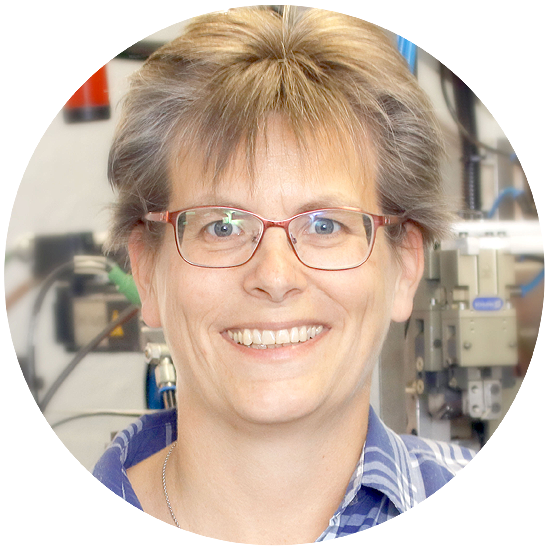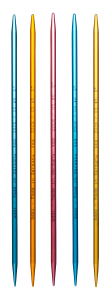Do you need a quotation or advice about our processes and services?
Our technical project manager Caroline Deutschmann, is happy to answer any of your questions.
Contact her directly at +49 (0)2352 9781 0

SURFACE FINISH
SURFACE FINISH
Seltertech offers the latest and most innovative in-house electroplating surface finish technology, for various base materials. This includes functional and decorative surfaces. We can use bright nickel, copper plating, and white-bronzing with chromic and sulphuric acid.
Regular quality control of the baths and thickness of the films are done using a modern X-ray fluorescence measuring device – this guarantees the best and most consistent results.
Surface finishing and coating is done primarily on frames. However, we can also do metal finishes on drums or rolls, if necessary.
Please contact us with the specifications about the component to be electroplated. We are pleased to guide you with your project.
PROCEDURE
GALVANIC COPPER
Galvanic copper plating is used as a surface finish as well as a base for various coating systems. When used as a base for nickel and chromium coatings, it ensures long-lasting protection. On brass, it is used as a functional interlayer, where the copper plated surface enhances the resistance to corrosion and improves its thermal and electrical conductivity. The galvanic copper plating produces a brilliant and ductile coating, which is characterized by its slight hardness and excellent adhesion. Copper is currently in vogue especially in interior designing and popular because of its versatility. A natural patina is developed through weathering on galvanic copper-plated surface. The galvanic copper plating provides aesthetics and protection at the same time.
Advantages:
- The galvanic copper plating ensures a base layer of nickel and chromium coatings for durable protection against corrosion.
- In brass, it serves as a functional interlayer. The thickness of the layer is selected according to requirement.
- It has good electrical and thermal conductivity.
- As a combination layer, for example, Cu, Ni and Sn, it is also suitable for warm humid climates.
- The copper-plated surface offers a decorative look and is easy to polish.
ANODIZING CHROMIC ACID
This method of surface finishing is normally used when high emphases are placed on corrosion prevention and technical anodizing is not an option because of the fatigue endurance limit. The fatigue endurance limit of the base material is not compromised. The outer layer is converted so that it becomes a hard oxide layer. A non-solidified chromic acid layer also provides a perfect primer for aluminium components that need to be glued or painted. Its residues do not affect the base material. In comparison to sulphuric acid, it is also an excellent treatment within the aircraft & aerospace industry.
Advantages:
- Used primarily in the aerospace industry
- Technically functional
- Abrasion resistance and hardness
- Corrosion protection
- The fatigue endurance limit of the base material is not affected
- The chromic acid residues do not affect the base material
- Good electrically insulated properties, low electrical conductivity.
- Thickness layers of 2 to 5 µm
WHITE BRONZING
White-bronze is an alloy of copper and zinc which is used as a surface finish. It is non-magnetic and resistant to the environmental and wearing. It also has good electrical properties.
White Bronze is a good alternative to nickel since it causes no allergies according to relevant scientific findings. This method completely enhances the production of skin-friendly items when combined with nickel-free substrate materials and other nickel-free processes.
Its skin friendliness has been proven in wearer trials on sensitive subjects. White bronze is therefore used worldwide for nickel-free coating of objects successfully.
Advantages:
- Colour: bright white and tarnish resistant, high reflectancy
- Hardness 450 to 550 HV
- Corrosion resistant in sulphurous atmospheres, ammonia and oxidising acids
- Diffusion barrier against non-ferrous metals
- Temperature resistant
- Solder
- Antibacterial surface
- Low contact resistances for electrical conductivity
- Food grade
- Nickel-free (EU Nickel Directive 94/27 / EC, Bio-Tex 100 et seq.)
- Free of heavy metals such as Cr, Pb, Co, Th, etc.
- Combinable with precious metals
- Diamagnetic
- Excellent thickness distribution
- Large working area
- Paintable
- Coatings are RoHS compliant
- Non-allergenic, as caused by nickel
ANODIZING SULPHURIC (GS-PROCESS)
The anodizing process (abbreviation for electrolytic oxidation of aluminium) as a surface treatment is used to create a protective layer on aluminium through anodic oxidation. The protective layer is, in contrast to the galvanic coating process, not deposited on the work piece, but formed by converting metal surface in alumina.
After anodization, the porous structure of the oxide layer is sealed. If colour pigments have been applied to the porous oxide layer prior to the sealing, they are “absorbed” into the pores and permanently enclosed.
In GS processes, the work piece is connected to an anode in an electrolyte bath. When the direct current begins to flow, anions O and cations H+ are created in the electrolyte.
The anions move to the anode (fixture / work piece) and form Al2O3, alumina or an anodized layer. The cations move to the cathode, giving off an electron and form H2 molecules, which rise gas.
The oxidation starts at the outer surface and continues to the metal interior. Since the oxide layer occupies larger volumes than the converted metallic aluminium layer, it expands outwards to about 1/3 and inwards to 2/3 its size. A definable layer between 5 and 25μ is created depending on exposure time. The standard thickness on the façade area is 20μ. Because of the relatively high re-dissolution of the electrolyte, the thickness of the layer is limited to ca. 35μ.
The anodic coatings produced with this surface finish are colourless and colourable, taking the aluminium alloy used into account. The resulting chemical and mechanical resistance caused by layering is well suited for several applications. However, the porous structure of the aluminium oxide layer formed, must be compressed.
Advantages:
- Corrosion resistant
- Abrasion resistant
- High wear resistance
- Extremely hard and scratch-resistant surface
- Non-fading single color
- The anodised layer is electrically non-conductive
- Low maintenance required
- Hardness of the generated oxide layer 250-350 HV (Vickers)
For comparison, aluminum 50-70 HV
Steel 150 -200 HV
GUSTAV SELTER GmbH & Co. KG
Hauptstraße 2 – 6
58762 Altena
Germany
© COPYRIGHT 2016-2023 GUSTAV SELTER GMBH & CO. KG


